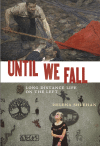
NEW! Until We Fall: Long Distance Life on the Left
Offers vivid first hand accounts of encounters with fellow socialists following the fall of the Soviet Union
Most westerners glimpsed the breakup of the Soviet Union at a great distance, through a highly distorted lens which equated the expansion of capitalism with the rise of global democracy. But there were those, like Helena Sheehan, who watched more keenly and saw a world turning upside down. In her new autobiographical history from below, Until We Fall, Sheehan shares what she witnessed first-hand and close-up, as hopes were raised by glasnost and perestroika, only to be swept away in the bitter and brutal counterrevolutions that followed.
In Until We
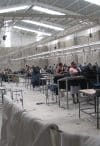
Unequal Value Transfer from Mexico to the United States
Matteo Crossa reveals the true nature of unequal value transfer from Mexico to the United States. Going beyond a simple tally of wages lost versus remittances, Crossa’s research demonstrates the true magnitude of the value stolen from Mexico, negating the claim that its manufacturing sector is a boon to the Mexican working class. | more…
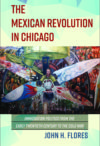
Revolutionary Mexico in Chicago
In The Mexican Revolution in Chicago: Immigration Politics from the Early Twentieth Century to the Cold War, John H. Flores illustrates the growth of the Mexican population in 1920s Chicago and how migrant communities situated and organized themselves politically in an often-hostile social environment. Drawing from political experiences in Mexico, Flores identifies and explores the evolution of a Mexican population whose identities and loyalties were shaped and divided by the Mexican revolutionary and counterrevolutionary processes in la patria (the homeland). | more…
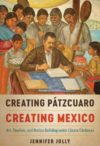
Interrogating the Cultural Production of Mexico
As part of a deconstruction of national identity, Jennifer Jolly, in her Creating Pátzcuaro, Creating Mexico: Art, Tourism, and Nation Building under Lázaro Cárdenas, analyzes the tourist town of Pátzcuaro in the west-central Mexican state of Michoacán as a microcosm of cultural power in which tourism, art, history, and ethnicity were woven together under the presidency of Lázaro Cárdenas del Río (1934–40). | more…

Green Card
A new poem by Kenneth Salzmann, author of The Last Jazz and Other Poems. | more…
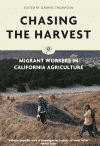
California’s Migrant Farmworkers
A Caste System Enforced by State Power
“No one comes out here. No one knows what we go through,” Roberto Valdez, a farmworker in the Coachella Valley town of Thermal, California, tells Gabriel Thompson, the interviewer and editor of Chasing the Harvest, a recently published book of interviews with farmworkers, growers, union activists, teachers, and others. And as one reads through the compelling stories that are told in the collection, one gets a deep sense of what Roberto means, as well as a passionate urge to have others know of the life and work of those who labor in California’s fields. | more…

‘I Grew Up with Extraordinary People’
The Part of “Illegal” They Don’t Understand
Anyone who really wants to understand U.S. immigration policy needs to read the brief history of the U.S.-Mexico border in Aviva Chomsky’s often-brilliant new book on immigration.… Politicians constantly tell us we have lost control of the border. In fact, as Undocumented demonstrates, never in the 166 years since the border was established by the 1848 Treaty of Guadalupe Hidalgo has it been so tightly controlled as it is now. For nearly half its history it was exactly the thing immigration opponents say they fear most—an open border. The first serious restrictions did not come until a head tax and a literacy requirement were imposed in 1917, and even then there was an exemption for Mexican workers, the people most likely to enter the country from the south.… The United States wanted this labor for a reason: it was cheap and disposable. | more…
The Migration and Labor Question Today: Imperialism, Unequal Development, and Forced Migration
It is impossible to disentangle the migration and labor question today without a deep understanding of the nature of contemporary capitalism, namely, neoliberal globalization. One of the main features of the new global architecture…is the assault on the labor and living conditions of the majority of the global working class, and in particular the migrant workforce, which is among the most vulnerable segments of this class. This essay will analyze some key aspects of the system that contemporary migration is embedded in, with emphasis on the process of segmentation and the growing precariousness (precarization) of labor markets worldwide. | more…
Mexico’s Labor Movement in Transition
The Mexican labor movement has been undergoing a profound transformation in the last ten years, the result of twenty years of neoliberal economic policies and the transformation of the Mexican one-party state. A new independent labor movement has emerged which has not only broken with the old state-controlled labor-relations system, but has also put itself forward as the leader of the social movements, and, at the moment, appears as a real political force that can challenge the government. | more…